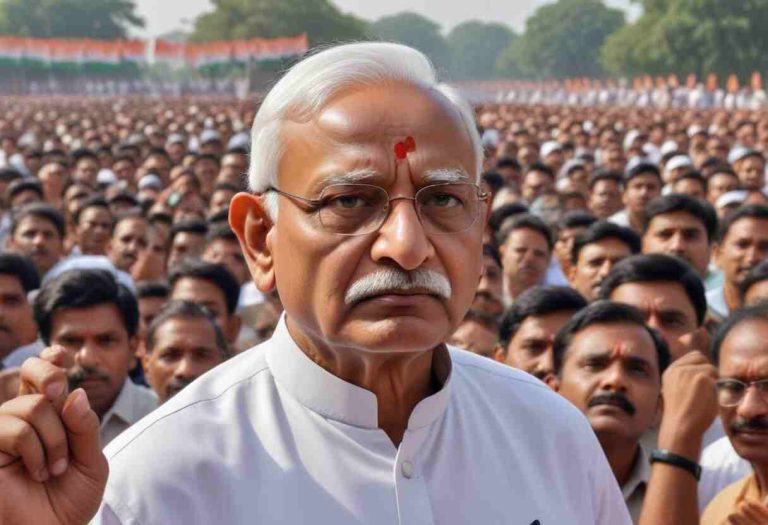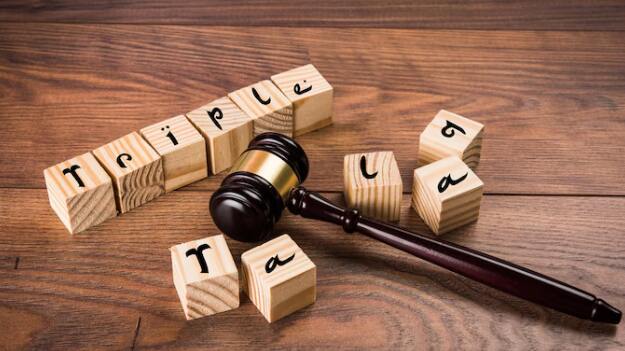Introduction
In a democracy like India, the right to protest is both a fundamental freedom and a cornerstone of civil society. However, this right often intersects with the imperative of maintaining public order, leading to a delicate balancing act under the Indian Constitution. Through these seminal cases, the Indian judiciary has underscored the importance of striking a delicate balance between the right to protest and the imperative of maintaining public order. Upholding constitutional values of democracy, free speech, and dissent, these judgments have guided navigating the complex terrain where individual liberties intersect with collective security, ensuring that India’s democratic fabric remains resilient and vibrant
At the heart of any democracy lies the right to protest – a fundamental avenue for citizens to voice dissent, demand change, and participate in the democratic process. In India, a nation known for its vibrant democracy and diverse populace, this right is enshrined in Article 19(1)(a) of the Constitution, guaranteeing the freedom of speech and expression, including the right to assemble peacefully and without arms. However, while protests serve as a powerful mechanism for social change, they also pose challenges to public order, safety, and security. This article delves into the intricate interplay between the right to protest and maintaining public order under the framework of the Indian Constitution, examining judicial interpretations, regulatory frameworks, and the way forward.
Constitutional Framework:
The Indian Constitution, a beacon of democracy, guarantees its citizens the right to freedom of speech and expression under Article 19(1)(a). This provision empowers individuals to express dissent and assemble peacefully, crucial for a thriving democratic society.
Yet, this right is not absolute. Article 19(2) permits the imposition of reasonable restrictions on the exercise of this freedom in the interest of public order, among other legitimate grounds. This sets the stage for a nuanced interplay between individual liberties and the state’s responsibility to maintain law and order.
The Right to Protest:
Protest is deeply ingrained in India’s socio-political fabric, serving as a vital tool for citizens to voice grievances, challenge injustices, and demand accountability from the government. From historic movements for independence to contemporary protests against social inequalities, the right to protest has been pivotal in shaping the nation’s democratic discourse.
Article 19 and Right to Protest
The right to protest peacefully is provided in the Indian Constitution. Article 19(1)(a) entitles the citizens to the freedom of speech and expression and Article 19(1)(b) gives the right to peacefully assemble without arms. However, Article 19(2) also imposes reasonable restrictions on this right to peacefully assemble or protest.
These reasonable restrictions can be imposed for the sovereignty and integrity of India, the security of the nation, friendly relations with foreign States, public order, decency or morality, or in relation to contempt of court, defamation, or incitement to an offense.
The Supreme Court, however, has also held in the case of Amit Sahni v. Commissioner of Police & Ors. that the right to protest, though a fundamental right, is not absolute.
Challenges and Controversies:
However, the exercise of the right to protest often faces challenges, especially concerning public order concerns. Instances of protests turning violent, disrupting essential services, or posing threats to public safety raise complex questions about where to draw the line between legitimate dissent and unlawful behavior.
In recent years, controversies surrounding protests, such as the Citizenship Amendment Act (CAA) protests or farmers’ agitation, have brought this issue to the forefront. The clash between protesters’ rights and the state’s efforts to maintain public order has sparked debates on the appropriate balance between freedom and security.
Legislative Provisions:
To maintain public order and prevent disruptions, various laws and regulations empower authorities to regulate the conduct of protests and demonstrations. The Code of Criminal Procedure (CrPC) provides provisions for the imposition of Section 144, which enables authorities to prohibit gatherings of four or more people in a particular area deemed to be prone to violence or public disturbance. Additionally, the police have powers under the Police Act to manage and control public assemblies to ensure public safety and order.
Judicial Interpretation:
The judiciary plays a crucial role in interpreting and safeguarding the right to protest while upholding the principles of public order and the rule of law. Over the years, the Indian courts have articulated nuanced principles to guide the regulation of protests. The Supreme Court, in landmark judgments such as Kedar Nath Singh v. State of Bihar and S. Rangarajan v. P. Jagjivan Ram, has affirmed the importance of peaceful assembly, the duty of the state to facilitate peaceful protests, and the permissible restrictions on the exercise of the right to protest in the interest of public order, morality, and the sovereignty and integrity of India.
Regulatory Framework:
To strike a balance between the right to protest and public order, the Indian government has enacted laws and regulations governing the conduct of protests and demonstrations. The police, as the primary law enforcement agency, are responsible for managing and regulating protests to prevent violence, maintain public order, and protect the rights of all citizens. However, concerns have been raised about the misuse of laws such as Section 144 of the Criminal Procedure Code to stifle legitimate dissent and curtail the right to protest.
Way Forward:
Balancing the right to protest with maintaining public order requires a multifaceted approach that upholds democratic principles while ensuring the safety and security of all citizens. It entails robust dialogue between the government, civil society, and protest organizers, proactive measures to address grievances, and transparent mechanisms for conflict resolution. Moreover, strengthening law enforcement capabilities, promoting civic education, and fostering a culture of tolerance and respect for dissent are essential to safeguarding democratic values and ensuring the peaceful exercise of the right to protest.
Right to protest Vs. Public Order
1. Right to Protest:
– Definition: The right to protest is a fundamental aspect of freedom of expression and assembly, allowing individuals to voice dissent, grievances, and opinions through peaceful demonstrations, rallies, or gatherings.
– Legal Basis: Enshrined in the Constitution or laws of democratic countries, including the Universal Declaration of Human Rights and various national constitutions.
– Purpose: To provide a mechanism for citizens to participate in the democratic process, hold governments accountable, advocate for change, and express solidarity with causes or issues.
– Protection: Protected as a fundamental right, often under provisions guaranteeing freedom of speech, expression, and assembly.
2. Public Order:
– Definition: Public order refers to the maintenance of peace, security, and stability within society, ensuring that the rights, safety, and well-being of all citizens are protected.
– Legal Basis: Governed by laws, regulations, and law enforcement measures aimed at preventing disorder, violence, or disruption to essential services.
– Purpose: To safeguard public safety, protect property, and uphold the rule of law, allowing communities to function harmoniously and individuals to exercise their rights without fear of harm or intimidation.
– Protection: Protected through the enactment and enforcement of laws related to public order, including measures such as curfews, restrictions on assembly, and law enforcement interventions when necessary.
Maintenance of law and order
- The Constitution of India: Guarantees the fundamental right to freedom of speech and expression, including the right to assemble peacefully and without arms (Article 19(1)(a)).
- The Indian Penal Code (IPC): Contains provisions relating to unlawful assembly (Section 141), rioting (Section 146), promoting enmity between different groups (Section 153A), and public nuisance (Section 268), among others.
- The Code of Criminal Procedure (CrPC): Empowers authorities to take measures to maintain public order, including issuing orders under Section 144 to prohibit gatherings of four or more people in a particular area.
- The Police Act: Provides guidelines for law enforcement agencies to manage and regulate protests while ensuring public safety and order.
- The Right to Information (RTI) Act: Allows citizens to seek information from public authorities, including details related to government policies, decisions, and actions that may be subject to protest.
- The Contempt of Courts Act: Prohibits actions that obstruct or interfere with the administration of justice, including acts of contempt that may arise during protests or demonstrations.
- The National Security Act (NSA): Allows preventive detention of individuals deemed to be a threat to national security, which may be invoked in situations of civil unrest or protests posing a threat to public order.
8. The Unlawful Activities (Prevention) Act (UAPA): Deals with the prevention of unlawful activities, including acts of terrorism, which may have implications for protests or demonstrations perceived as a threat to national security
The Protest for Change
India has a long history of protests. As a colony of Britain for almost 200 years, protests were an indispensable part of our freedom struggle. The people of India fought against the colonial government, its policies, and laws by expressing their views publicly through ways like staging dharnas such as Mahatma Gandhi’s satyagraha and the consequent civil disobedience movement.
Thus, it is evident that protests were an integral part of the freedom struggle which in turn contributed to the political public sphere and the Constitution of India. Even after independence, there have been many protests such as the Chipko movement and the Narmada Bachao Andolan, where the public registered its dissent against the system and the government. Protests are considered the hallmark of a free and democratic society that demands that the voice of the people be heard by those in power and any decision should be taken after proper discussion. This article examines the legality of protests and whether the Right to Protest is a fundamental right.
Nirbhaya Case
On December 17, 2012, the country woke up to the news of a heinous crime, the gruesome gang rape of a woman in a moving bus on the roads of Delhi. The details of the horrific crime shook the conscience of the country and thousands of people came out on roads. Protests broke out across the capital city demanding justice for Nirbhaya (the victim was referred to by this name) and women’s safety.
Nirbhaya succumbed to her injuries on December 29, 2012, and the protests intensified. Around 4,000 people gathered at Jantar Mantar after her death and a protest march was organized across the capital city. The fake promises by the politicians were unable to placate the protestors.
One week after the crime, a committee was constituted to examine the criminal laws and recommend amendments for enhanced and effective punishments and quicker trials in cases of crimes against women.
On the recommendations of the committee, the Criminal Law (Amendment) Act, 2013 was enacted that amended the Indian Penal Code (IPC), Code of Criminal Procedure (CrPC), and the Indian Evidence Act (IEA). Through the amendment, the definition of rape was widened, the definition of consent was provided, and the burden of proof in rape cases was shifted to the accused rather than the prosecution or the victim.
Further, it led to the creation of the Nirbhaya Fund in the 2013 annual budget, and Rs 1,000 crore was allocated for safety and security schemes for women and other women empowerment schemes.
Protests for Citizenship and the Role of Women
The Citizenship (Amendment) Act was tabled and eventually passed by both houses of parliament in December 2019. This led to nationwide protests against the Act as well as the proposal of the National Register of Citizens (NRC). The distinctive feature of these protests was that at every protest site, the flag bearers were women. Women have always been sidelined, but this time they were on the frontlines, demanding to be heard and demanding change. The protests began in Assam and then spread to other states including UP, Delhi, Meghalaya, etc. The primary demand of the protestors was the abrogation of the Act.
The Act was criticized on the grounds that it is discriminatory on the basis of religion and it primarily discriminates against the Muslim community. The other demand of the protestors was that the NRC should not be implemented nationwide as was implemented in Assam, which declared a large number of people foreigners. The primary concern of the protestors was that Indian Muslims along with poor Indians might be rendered stateless and could land in detention centers. The protesters also raised concerns against authoritarianism and the crackdown by police in universities including JMI, JNU, AMU, etc., to suppress protests.
Protest of ‘Annadata’
The farmer’s protests are ongoing protests by farmers against the three farm Acts which were recently passed by the Indian Parliament in September 2020. These three legislations have been branded as “anti-farmer” by various farmer unions and are considered to privatize the whole agricultural sector, thus leading to farmers living at the mercy of big corporates. However, the government still maintains that these Acts are beneficial for the farmers and would make the process of selling products directly to big buyers effortless. The government claims that the protestors are misinformed.
Immediately after the Acts were introduced, the protests began in Punjab. After two months of protests, the farmer unions initiated the ‘Dilli Chalo’ movement where a large number of farmers marched toward the capital city. On November 26, 2020, a nationwide strike was announced and according to reports, almost 250 million people took part in it. It is also estimated that about 2-3 lakh farmers are present at the Delhi borders. The government ordered the police personnel to use water cannons, batons, tear gas, etc., to prevent the farmers from entering Delhi from various borders. At present, almost 50 farmer unions have been protesting against the three Acts.
Case Laws
In the annals of Indian jurisprudence, the tension between the right to protest and the imperative of maintaining public order has been elucidated through landmark case laws, shaping the contours of democratic governance.
1. Ramlila Maidan Incident (2012):
In 2012, the Supreme Court delivered a significant judgment in the case of Balanarasimha Rao v. Union of India, concerning the right to peaceful protest and the state’s duty to maintain public order. The case stemmed from the crackdown on Baba Ramdev’s protest at Delhi’s Ramlila Maidan. The Court underscored the fundamental right to peaceful assembly and criticized the excessive use of force by authorities, emphasizing the need to balance public order concerns with democratic freedoms.
2. S. Rangarajan vs P. Jagjivan Ram (1989):
In the seminal judgment of S. Rangarajan v. P. Jagjivan Ram, the Supreme Court reiterated the paramount importance of freedom of speech and expression in a democratic society. The case arose from the banning of a film screening in Tamil Nadu on the grounds of potential public disorder. The Court held that the mere apprehension of public disorder cannot justify curbing free speech and that restrictions must be narrowly tailored to address specific threats to public order.
3. Mazdoor Kisan Shakti Sangathan v. Union of India (2018):
In Mazdoor Kisan Shakti Sangathan v. Union of India, the Supreme Court reaffirmed the right to peaceful protest as a cornerstone of democracy. The case involved restrictions imposed by the Rajasthan government on protests and assemblies near the state assembly. The Court emphasized that the state cannot unduly restrict the right to protest, noting that democracy thrives on dissent and public debate.
4. Kedar Nath Singh v. State of Bihar (1962):
In Kedar Nath Singh v. State of Bihar, the Supreme Court delineated the boundaries of free speech concerning sedition laws. The case highlighted the delicate balance between the right to dissent and the state’s duty to maintain public order. While affirming the constitutional validity of sedition laws, the Court emphasized that criticism of the government, however vehement, does not constitute sedition unless it incites violence or public disorder.
Conclusion:
In conclusion, Balancing the right to protest with maintaining public order is a constitutional imperative that requires a nuanced and delicate approach by both the government and citizens. While the Constitution guarantees the right to peaceful assembly as a fundamental right, it also imposes limitations to ensure public order, safety, and security. By upholding the principles of democracy, the rule of law, and respect for fundamental rights, India can navigate the complex interplay between the right to protest and the maintenance of public order, thereby fostering a society that values both dissent and harmony. Achieving a balance between the right to protest and maintaining public order requires a judicious approach from both the state and citizens. While the state has a legitimate interest in safeguarding public safety and preventing disruptions, it must also respect citizens’ constitutional rights and ensure that any restrictions on protests are proportionate and necessary.
Similarly, citizens engaging in protests have a responsibility to exercise their rights responsibly, respecting the rule of law and the rights of others. Peaceful and non-violent protests not only strengthen democracy but also command greater legitimacy and public support the right to protest and public order are not opposing principles but complementary aspects of a democratic society. While the Constitution guarantees the right to dissent, it also entrusts the state with the task of maintaining public order. By navigating this delicate balance with prudence and respect for constitutional values, India can uphold both individual freedoms and collective security, ensuring a vibrant and robust democracy for generations to come.
Also Read:
Shadwell vs Shadwell
How To Send A Legal Notice In India










